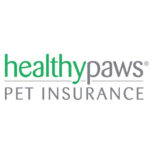Best Pet Insurance Plans For Shiba Inus In 2025
According to my assessment, Healthy Paws offers the finest pet insurance specifically for Shiba Inus.
We’ve saved shoppers an average of $350 per year on their pet insurance.
Owning a Shiba Inu means you probably worry about their health. Shiba Inus, being a pure breed, have a higher chance of experiencing genetic health issues than mixed breeds. It’s unfortunate that 4 out of 5 pet parents can’t cover an unexpected $500 vet bill without help. Pet insurance can help alleviate this financial burden.
This review looks at some of the best pet insurance policies for Shiba Inus to help you make an informed choice. Just like human health insurance, pet insurance allows access to better care and reduces out-of-pocket expenses. But the best part? It’s much more affordable than health insurance for humans.
Best Pet Insurance Companies For Shiba Inus, 2025
Different pet insurance companies serving Shiba Inus share common goals of pet health and financial protection, but they differ in specific offerings. What’s best for one Shiba Inus may not be for another.
Here’s our guide to the top pet insurance options for Shiba Inus.



Comparison Of The Best Pet Insurance Companies For Shiba Inus
The breakdown of pet insurance options for Shiba Inus highlights diverse strengths among the leading providers.
| Overall Rating | Best For | Waiting Period | Reimbursement % | Benefit Limit | Get A Quote | |
|---|---|---|---|---|---|---|
| Healthy Paws |
|
Overall |
15 days accidents/illness |
70%, 80%, 90% |
Unlimited annual and lifetime |
Instant Quote |
| Lemonade |
|
Cheap |
2 days accidents, 14 days illness |
70%, 80%, 90% |
$5,000 to $100,000 annually |
Instant Quote |
| ManyPets |
|
Puppies |
15 days accidents/illness |
70% or 80% |
Unlimited annual and lifetime |
Instant Quote |
| Pumpkin |
|
Older Dogs |
14 days accidents/illness |
90% |
$10,000, $20,000 or unlimited |
Instant Quote |
| Spot |
|
Multiple Pets |
14 days accidents/illness |
70%, 80%, 90% |
$2,500 to unlimited |
Instant Quote |
Detailed Reviews Of The Best Shiba Inu Pet Insurance Companies
Best Overall
Key Statistics
Why We Like Them
⇅Healthy Paws emerges as the top choice for pet insurance because it features unlimited claim payouts, no per-incident maximums, or caps. This prevents the need for difficult decisions regarding your pet’s health care due to policy limitations. Their policy is clear-cut, without expensive add-ons, and they allow visits to any licensed vet. Submitting claims is convenient through their mobile app or website, with most claims processed in two days.
Benefits & Drawbacks
⇅- Annual or lifetime payouts have no upper limits.
- We'll refund your purchase within 30 days.
- Nearly all claims are resolved within a two-day processing period.
- It's possible to pay the vet directly. ✓
- There are no usual wellness choices. ✘
Runner-Up For Best Overall
Key Statistics
Why We Like Them
⇅Lemonade emerged as the most affordable pet insurance for Shiba Inus. While their coverage limits (ranging from $5,000 to $100,000 per year) are similar to other companies we reviewed, they do not offer unlimited coverage like Healthy Paws. Lemonade’s standard policy covers accidents and illnesses such as cancer, heart disease, broken bones, and hip dysplasia, which is common in older Shiba Inus. Like most insurers, Lemonade excludes coverage for preexisting conditions, dental problems, behavioral issues, and elective procedures.
Benefits & Drawbacks
⇅- Select a wellness program if desired.
- Accident coverage kicks in after a brief two-day wait.
- Save 10% on your insurance premiums by bundling pet coverage with Lemonade's home, renters, or car insurance. ✓
- A 24/7 helpline for pet telehealth is not offered.
- You'll need to pay extra if you want coverage for vet exam expenses.
- Prescription food and microchip costs are not eligible for reimbursement. ✘
Best For Puppies
Key Statistics
Why We Like Them
⇅ManyPets provides highly beneficial insurance options for puppies. Rates are unaffected by pre-existing conditions, and treated ailments may be covered after 18 months. Unrelated conditions continue to qualify for coverage. Young Shiba Inus, like all puppies, are susceptible to illnesses like poisoning, ingestion of foreign objects, and accidents due to their lively demeanor. Early insurance coverage greatly reduces the risk of future exclusions for pre-existing conditions.
Benefits & Drawbacks
⇅- Accessible in over 40 states
- Funds vet exams required for illness and accident treatments.
- Proposes alternative wellness strategies. ✓
- There's no all-day, every day pet telehealth hotline.
- This policy does not cover pet behavior treatments.
- Coverage excludes alternative medical treatments. ✘
Best For Older Dogs
Key Statistics
Why We Like Them
⇅With age, Shiba Inus are susceptible to genetic ailments like cruciate ligament problems and hip dysplasia, which may necessitate expensive treatments. Pumpkin pet insurance ensures immediate coverage for these conditions without waiting periods and includes reimbursement for veterinary exams if your senior Shiba Inus requires treatment. They provide extensive coverage options for various Shiba Inus health issues, including surgeries and dental care, offering three deductible options and a standard 90% reimbursement rate.
Benefits & Drawbacks
⇅- Select from available wellness initiatives
- Lower costs for covering multiple pets with insurance.
- Receive a 90% reimbursement for pets, including dogs and cats, that are 8 weeks and older. ✓
- Pet telehealth assistance is not available 24 hours a day, 7 days a week.
- You can't get a plan that's strictly for accidents. ✘
Best For Multiple Pets
Key Statistics
Why We Like Them
⇅Many Shiba Inus owners keep several pets because they are very friendly. Spot offers a 10% discount for insuring multiple pets, which can lead to substantial savings. Their optional preventive care plan covers wellness services such as an annual vet visit, fecal test, and teeth cleaning, and includes coverage for some vaccinations. Spot provides a 30-day money-back guarantee if you’re dissatisfied with their coverage or service. They also reimburse up to 90% of eligible vet bills and offer a 24/7 vet helpline. Moreover, you have the option to visit any U.S.-licensed veterinarian or specialist.
Benefits & Drawbacks
⇅- Deals with microchipping procedures
- You have the choice of a $100 deductible.
- Offers a 24/7 hotline for pet health consultations. ✓
- In cases of accidents, there's a 14-day waiting period, whereas some top competitors require just 2 days. ✘
Average Cost Of Pet Insurance For Shiba Inus
| Company | Deductible | Annual Reimbursement % | Monthly Price | Age of Dog |
| Healthy Paws | $500 | 70% | $70.30 | 5 year old |
| Lemonade | $500 | 70% | $40.00 | 5 year old |
| Spot | $500 | 70% | $73.34 | 5 year old |
| Healthy Paws | $500 | 80% | $36.52 | 1 year old |
| Lemonade | $500 | 80% | $20.67 | 1 year old |
| Spot | $500 | 80% | $53.80 | 1 year old |
| Healthy Paws | $500 | 70% | $37.64 | 3 month old |
| Lemonade | $500 | 70% | $29.13 | 3 month old |
| Spot | $500 | 70% | $83.12 | 3 month old |
Average Cost Of Typical Vet Procedures
| Typical Vet Procedure | Average Cost Of Procedure |
| Puppy vaccinations | $75-100 |
| Flea & tick prevention | $40-200 |
| Heartworm prevention | $24-120 |
| Spay or neuter surgery | $200-800 |
| Annual exam | $240-600 |
| Teeth cleaning | $200-500 |
| Microchip | $40 |
Common Health Issues For Shiba Inus
Purebred Shiba Inus are more likely to encounter health problems compared to other breeds. In some cases, breeders have overlooked genetics when breeding Shiba Inus, which has led to the spread of various health issues throughout the breed. This makes Shiba Inus particularly susceptible to genetic disorders.
Here are some of the health issues Shiba Inus commonly face:
- Hip Dysplasia
- Patellar Luxation
- Eye Conditions (e.g., cataracts, glaucoma, PRA)
- Hypothyroidism
- Dental Issues
- Luxating Trachea
- Immune-Mediated Hemolytic Anemia (IMHA)
Average Cost Of Emergency Vet Procedures
| Emergency Pet Procedure | Average Cost Of Procedure |
| General consultation/exam | $100-$150 |
| General bloodwork | $80-200 |
| X-rays | $150-$250 |
| Ultrasound | $300-$600 |
| 1-2 day hospitalization | $600-$1,700 |
| 3-5 day hospitalization | $1,500-$3,500 |
| Wound treatment & repair | $800-$1,500 |
| Emergency surgery | $800-$2,500 |
| Oxygen therapy | $500 |
Is Pet Insurance Worth It For Shiba Inus?
Pet insurance provides a safety net for sudden veterinary expenses. Many pet owners pay out-of-pocket for medical care, but the majority can’t handle a $1,500 vet bill in an emergency. The right insurance can offer peace of mind and help you make decisions based on your pet’s health rather than money. The true benefit of pet insurance is determined by what you expect from it. If your pet is already undergoing treatment for a long-term issue, insurance won’t help with those costs, as no company covers preexisting conditions. But with the right policy and clear understanding, it can be worthwhile.
How To Find The Best Pet Insurance Company For You
The cost and variety of pet insurance plans differ by company, posing a challenge when selecting one. To find the optimal plan for your pet, consider these tips before applying for coverage.
Check Whether Your Pet Is Eligible
Puppies and kittens typically must be 6 to 10 weeks old to qualify for insurance, depending on the insurer. Older pets might not be eligible for initial enrollment or could be limited to accident coverage. Once enrolled, most plans guarantee lifelong coverage with ongoing premium payments.
Research What’s Covered
Pet insurance commonly covers expenses like surgery, hospitalization, and medications if your pet gets sick or injured. But some companies charge extra or won’t cover specific services. Examples include:
- Exam fees: Plans may cover X-rays and surgery but leave out the vet’s exam fee.
- Alternative therapies: Some plans include acupuncture and physical therapy, while others do not.
- Behavioral treatment: Not every policy covers therapy for behavioral problems like aggression.
- Prescription diets: Some plans exclude vet-prescribed food or supplements.
- Dental care: Coverage varies widely. Some plans may only cover dental conditions like gingivitis if your pet had a recent cleaning, while wellness plans might cover routine cleanings.
Pre-existing conditions, cosmetic procedures, and breeding expenses are generally not covered.
Decide How Much Coverage You Want
Many pet insurance policies have a yearly payout limit, though some do not. You must determine the amount that gives you peace of mind for covering veterinary expenses. If your pet is generally healthy, you may only need to cover routine care costs for years. However, unexpected surgeries or major illnesses could lead to significant expenses.
Understand Reimbursements And Deductibles
Pet insurance plans generally cover a percentage of your vet bill, allowing you to choose options like 70%, 80%, or 90% reimbursement.
Other plans might pay what the insurance company considers a standard fee for certain treatments, which may be lower than your vet’s charges, leaving you to pay the difference.
Most plans also include a deductible, which is the amount you pay before the insurance starts covering costs. Deductibles usually range from $100 to $250 or more. Some policies apply this per illness or injury, while others reset it annually.
A lower deductible and higher reimbursement rate usually mean higher premiums, while a higher deductible and lower reimbursement rate can lower your premiums.
Check Waiting Periods
Many insurance plans have a brief waiting period, usually about 14 days from policy purchase, before they cover general accident and illness treatments. No medical expenses are reimbursed during this initial period. Some plans impose longer waiting periods for specific conditions such as cruciate ligament injuries, which are common orthopedic issues in dogs. Cruciate ligaments are vital for knee stability, and damage to them can impair a dog’s mobility.
Examine Extra Costs
Several pet insurance companies offer coverage for routine services such as vet visits and vaccinations. To decide if it’s worth it, compare the annual cost of the wellness plan with what you’d pay out of pocket each year for these services. Check the details, as coverage for wellness benefits varies by insurer.
Compare Quotes
Pet insurance costs vary according to the insurer and the extent of coverage chosen. Certain pet insurers provide discounts, such as lower premiums for insuring multiple pets. Nevertheless, a discount doesn’t necessarily mean it’s the most advantageous choice. To discover the optimal pet insurance, evaluate quotes from multiple plans with similar coverage levels, deductibles, and reimbursement limits.
Factors That Impact Cost Of Your Pet Insurance Policy
The price of pet insurance, like your health insurance, can vary based on several factors:
- Where you live. Veterinary care costs in your area will influence the cost of your policy.
- Your pet’s age. Older pets tend to have higher premiums due to the increased risk of health problems.
- Your pet’s breed. Some breeds are more susceptible to certain conditions. For example, bulldogs and Boston terriers are more likely to have breathing issues, while larger breeds like German Shepherds may develop hip problems. These risks are reflected in the premium.
- Deductibles and coverage levels. The less you want to pay out of pocket, the higher your premium. For example, a $100 deductible leads to higher premiums but quicker reimbursements compared to a $500 deductible.
Our Methodology
The opinions and ratings were shaped by a comprehensive analysis of insurer websites, customer reviews, reviews from other platforms, and personal use of pet insurance products.
Quotes Analyzed
Years Of Industry Experience
Brands Reviewed
Research Hours
FAQs
Is pet insurance cheaper for purebred dogs?
Purebred dogs, being more prone to genetic health issues, generally face higher insurance costs than mixed-breed dogs.
What is the average cost of owning a Shiba Inu?
Initial costs for vaccinations, food, grooming, and insurance are approximately $3,000 for the first year, dropping to around $1,900 per year afterwards.
What insurance do you need for a dog?
It’s important for dog owners to have pet insurance in place to cover veterinary expenses and ensure their dog’s health.
Sources
⇅